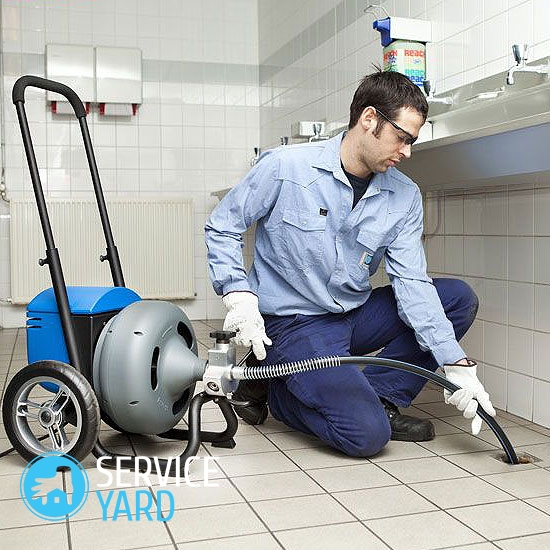Blockage elimination
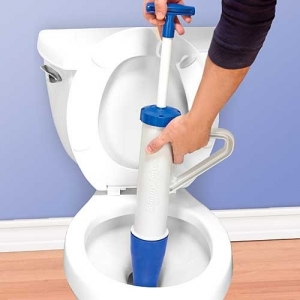
The piping system is an integral part of any home, and the most indispensable is the sewage system. All people use the bathroom, shower, bathtub, washing machines, which means that sooner or later deposits may form in the pipes and blockages will be necessary. To reduce such an unpleasant duty to spending a minimum of time and effort, we suggest that you familiarize yourself with the most effective and simple ways to solve such a problem.
to contents ↑Why do pipe clogs occur?
Typical causes of blockages are:
- Defects - created both during the installation of the system, and depending on the initial quality of materials and sanitary ware.
- Wastes not intended in their dimensions for risers of houses.
- Hair.
- Fat.
- Soap remnants.
- Mud.
Debris that builds up on pipes and forms deposits. And the mixture of all of the above creates corks that are impenetrable by the usual pressure of water. That is why, as soon as you notice the first signs that there is a blockage in the sewer, quickly remove it. Otherwise, the situation will worsen, and without a complete disassembly of the system, it will not be possible to fix it.
to contents ↑How to determine clogging in pipes?
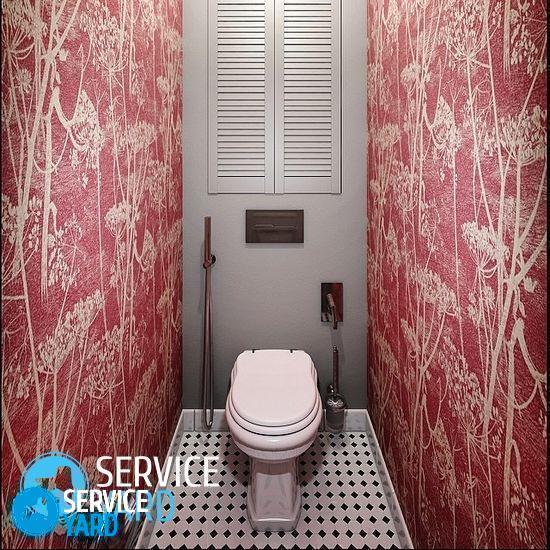 Occasionally, clogging of pipes can occur even in perfectly designed and installed sewers. This may be due to improper operation of both the apartment owners themselves and the residents of the entire house. The optimal solution to the problem is to call the plumbing, however, the “agility” of such services leads to a long wait and the inability to operate the sewage system. Therefore, by analogy with the rescue of drowning, the elimination of blockage is the work of the owners themselves.
Occasionally, clogging of pipes can occur even in perfectly designed and installed sewers. This may be due to improper operation of both the apartment owners themselves and the residents of the entire house. The optimal solution to the problem is to call the plumbing, however, the “agility” of such services leads to a long wait and the inability to operate the sewage system. Therefore, by analogy with the rescue of drowning, the elimination of blockage is the work of the owners themselves.
Symptoms of a problem are:
- Reducing the rate of outflow of water from the sink, bathtub or toilet bowl.
Important! If the water does not leave the pipeline at all, then this is a sign of an emergency, which requires surgical intervention and all the means from sewage blockages are already needed, which can only be at hand.
- A musty, unpleasant odor from the drain, which intensifies with time.
- Turbid, musty water appears in the underlying holes after turning on the source of the drain. Most often, this problem is observed in bathrooms and showers. Also a striking example of mash formation is considered to be the drain of the washing machine, if at the moment of outflow of water from the washing machine it appears in the bathroom, then in the pipeline a mash is formed.
to contents ↑Important! The above example is relevant in cases where the washing machine is connected to a common sewer.
How to remove a blockage?
After monitoring the piping systems and determining if there is a blockage as well as its approximate location, proceed to fix the problem.
You need to start with classic folk remedies (that is, gentle), first of all, with hot water. Since fat accumulations are often the cause of the problem, hot water can help to cope with the task. In case of a negative result, proceed to the use of special tools and proven tools.
How to eliminate blockage?
To remove the resulting blockage, you will need an inexpensive tool and the following ingredients:
- Plunger.
- Salt.
- Soda.
- Water.
- Rubber gloves (long to the elbow).
- Rag.
- Cream of tartar.
- Plumbing Rod.
Using these tools and means, you can remove blockages in the pipeline without causing plumbing, and most importantly, without using caustic chemicals.
to contents ↑Important! Use chemical cleaners for downpipes only in the most extreme cases, as these drugs can damage some types of pipes. In addition, chemicals can be harmful to humans through exposure to harmful fumes.
Folk remedies to eliminate blockages
Before starting to fix the problem, protect your hands with tight rubber gloves and remove hair, soap residue and other small debris from the drain hole.
Method number 1
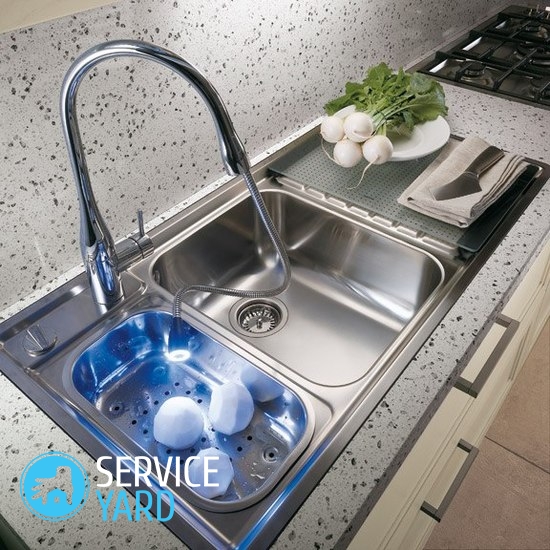 Use a proven folk method to eliminate blockages from pipes, following this way:
Use a proven folk method to eliminate blockages from pipes, following this way:
- Boil a kettle of water.
- Allow to cool slightly and drain the drain.
- After 15 minutes, use the plunger:
- Place the plunger cup over the drain hole.
- Pour some water (above the plunger bowl).
Important! If the cleaning process takes place in the bathroom, be sure to close the hole designed to drain excess water so that there is no air leakage.
-
- Perform several intensive movements of the plunger handle up and down to create a vacuum under the bowl.
- Pull the plunger out sharply.
- Repeat if necessary.
Method number 2
- Pour one cup of baking soda into the drain hole.
- Pour three glasses of hot water into the drain (preferably boiling water). An alkaline mixture will be created, which will dissolve the clog.
- Repeat if necessary.
Important! Soda is an excellent remedy for blockages, as it not only removes deposits, but also deodorizes the sink.
Method number 3
- Pour half a glass of baking soda into the sink.
- Pour half a glass of distilled vinegar into the drain hole.
- Close the drain hole with a stopper (a chemical reaction with foaming will occur between soda and vinegar).
- After a few minutes (for weak blockages) or several hours (for strong blockages) pour 1 liter of boiling water into the drain. All deposits will be removed from the pipe surface.
Method number 4
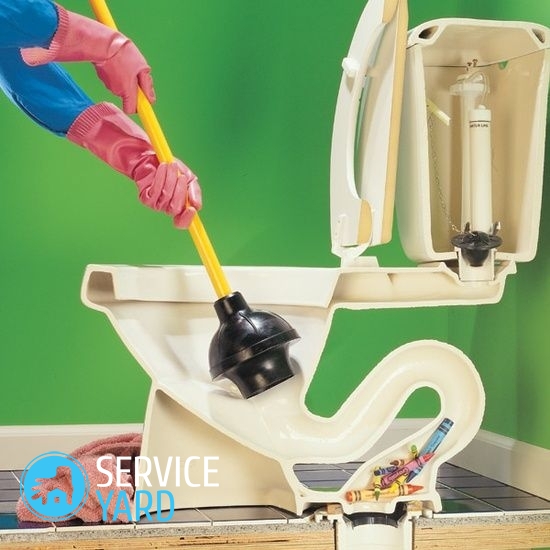 If the cause of poor water discharge is fat deposits, then use the following method to eliminate blockage:
If the cause of poor water discharge is fat deposits, then use the following method to eliminate blockage:
- Pour half a glass of salt and half a glass of baking soda into the drain pipe.
- Pour a kettle of boiling water into the mixture.
- Leave the drain overnight.
Method number 5
- Boil 3 liters of water.
- Pour 2 packets (20 g each) of citric acid into hot water.
- Pour the hot liquid into the drain.
Useful Tips
Weekly prophylaxis and pipe cleaning will prevent large pipe blockages and unpleasant odors. Use the following mixture for prevention: a glass of salt, a glass of soda and ¼ glass of tartar, mix and place in a jar with a lid.
Use the mixture as follows:
- ¼ pour a glass of cooked anti-clogging agent into the sewer and immediately add a glass of boiling water.
- Leave the solution for a minute.
- Rinse with cool water.
Elimination of sewage blockages with a plunger
A simple plunger tool helps eliminate blockages in the sink, pipes, bathtub, and toilet.
If the sewage is clogged, then use the devices as follows:
- Pour a large amount of water into the toilet.
- Plunge the plunger into the toilet so that the rubber edges fit snugly against the surface.
- With force, intensively and abruptly begin to press on the plunger. Under the influence of the pressure force, as well as the flow of water, a hydraulic shock will be created, which will remove the blockage.
- If the water level began to decline, then the blockage is removed. If nothing happened after work, then repeat the process a few more times.
Important! The edges of the cuff of the plunger must fit snugly to the surface of the toilet bowl, otherwise the water hammer will be weak.
Useful Tips:
- For a more snug fit to the surface of the toilet, cover the edges of the plunger with petroleum jelly.
- The plunger is good if the blockage is not too serious. If the device does not help, proceed to more radical measures and use a plumbing cable.
to contents ↑Important! On sale there are pneumatic plungers, which greatly facilitate the pumping process. In addition, such devices are equipped with a set of nozzles and in appearance resemble a conventional bicycle pump. The principle of operation of such a device is simple: it is necessary to draw water into the cylinder (as in a syringe), and then press the piston with force.
Pipe cleaning with a plumbing cable
If the "gentle" methods did not lead to the expected result, then use a plumbing cable. This is a special item for cleaning pipes. It is a steel wire on which several layers of the same steel wire are wound in different directions with a brush on one end and a control handle on the other.
Important! Use this kind of technology only in cases where the blockage is in the immediate vicinity of the drain or, at least, at a distance of the cable length.
The use of mechanical devices takes a long period of time, since it is necessary to disassemble the siphon, move the cable through the pipe and directly eliminate the blockage. But they have not yet come up with another option to break the cork, and an analogue of the cable can be found in almost every house.
- Remove the siphon, remove it and provide access to the sewer pipe.
- Take the cable and insert it into the hole in the pipe.
- Move the tool by turning clockwise until you come across a cork.
Important! To facilitate the movement of the cable through the pipe, add warm water in small quantities (if possible).
- Having reached the cork, destroy the blockage by successive movement of the cable.
- Carefully pull out the tool and remove dirt from it.
- Rinse the pipe with hot water and wash away any residual deposits from the walls.
Useful Tips:
- Plumbing cables come in different diameters: from 8 mm to 16 mm. Since the cable is cut in length, buy in the store a suitable option for you, based on the cross section of the installed pipes and the place to eliminate the blockage.
- If the bath drain is clogged, then it is easy to get to the mash with a cable through the overflow.
- Use a cable not only to clean the sewer pipes, but also to clean the water supply, boilers, boilers or storm sewers.
- If your sink siphon is clogged, use a long hose: put it on the faucet and insert the other end of the hose into the siphon. Turn on hot water and rinse the cork.
- If you have plastic pipes, then to drain the water should not be hot (no more than 50 C), otherwise - you will damage the pipe material.
Pipe blockage chemical
Cleaning the sewer with chemicals from blockages is always a “double-edged sword”:
- on the one hand, chemical methods actively destroy unwanted plugs;
- on the other hand, the same means used without following the instructions, as well as safety rules, can damage the piping system itself, which in turn can lead to irreversible consequences.
Types of household chemicals from blockages
All chemicals from blockages in sewer pipes can be divided into 3 groups:
- Prophylactic drugs. These products contain the minimum amount of active substances and are used periodically to prevent the formation of plugs.
- Active drugs. The composition of these funds includes acids and alkalis, which react and dissolve the formed deposits. These funds are used if the water in the drain leaves more slowly than usual.
- Emergency drugs - contain the maximum amount of active substances.They are used to eliminate the most serious blockages.
Chemicals are used in the form of a powder, liquid or gel. The drug is poured into the drain hole, acts on the cork for some time (time is indicated in the instructions), and then the system is washed with plenty of water.
Important! It is necessary to work with preparations for cleaning pipes with protective gloves.
Terms of use
When applying chemical control methods, adhere to the following rules:
- Use only industrial products.
- Strictly follow the instructions for use and dosage of funds.
- Do not mix chemical components yourself and never use several products at the same time.
Important! It is not recommended to use well-known non-native chemical products: kerosene, copper sulfate, various kinds of concentrated acids, as they are not only ineffective for removing plugs, but can also break the entire pipe system.
Popular blockage chemistry
Among industrial chemicals, the most popular and effective are:
- “Tiret” - removes the most severe blockages in pipes, safe for all types of plumbing: metal, metal-plastic pipes. Also on sale is a tool under this brand for the prevention of blockages. The product is manufactured in Poland.
- “Mr. Muscle” has in its composition an active component that allows you to dissolve food debris, hair lumps, destroy bacteria and neutralize odors. You can use the tool for all types of pipes. Sold in the form of a gel or foam. Foam is more effective for removing plugs. The product is made in Italy.
- "Mole". This is a liquid product that is an alkaline solution. It is used for all types of pipes, perfectly corrodes compounds of organic origin, including hair and even threads. For the prevention of “Mole” use once a week or once every 2 weeks. Suitable for both sinks and bathtubs and toilets.
Prevention of traffic jams in the sewer system
The best way to eliminate blockage problems is to prevent them from occurring. No need to resort to special special tools, just follow these simple rules:
- Install the filter screen on the drain hole. The mesh size of the mesh should be as small as possible so that solid particles do not get into the drain manifold.
- Periodically prevent clogging using special chemicals.
- After carrying out hygiene procedures, be sure to remove the remnants of hair from the surface of the sinks and the bathroom.
- Do not dispose of garbage and food debris in the drain and toilet
Stock footage
We hope that the information received has helped you get rid of blockages in the piping system. Which remedy for traffic jams is better - everyone determines for himself, based on life experience and preferences. But everyone should always be ready for possible occurrences of blockages, so there must be a plunger and others in the house, even simple folk or chemical means, as a last resort.
- How to choose a vacuum cleaner taking into account the characteristics of the house and coatings?
- What to look for when choosing a water delivery
- How to quickly create comfort at home - tips for housewives
- How to choose the perfect TV - useful tips
- What to look for when choosing blinds
- What should be running shoes?
- What useful things can you buy in a hardware store
- Iphone 11 pro max review
- Than iPhone is better than Android smartphones


